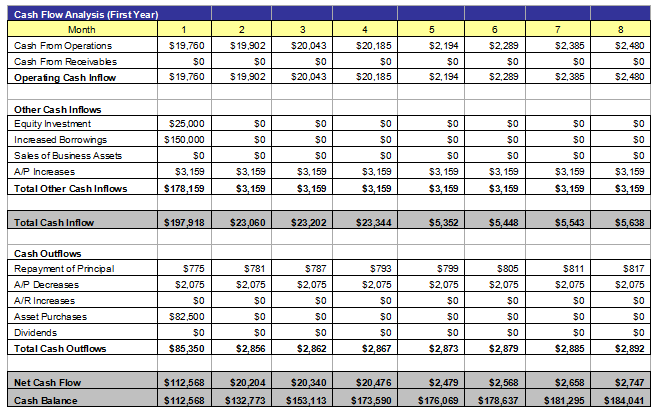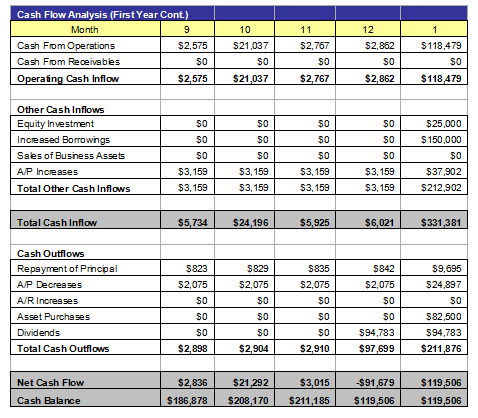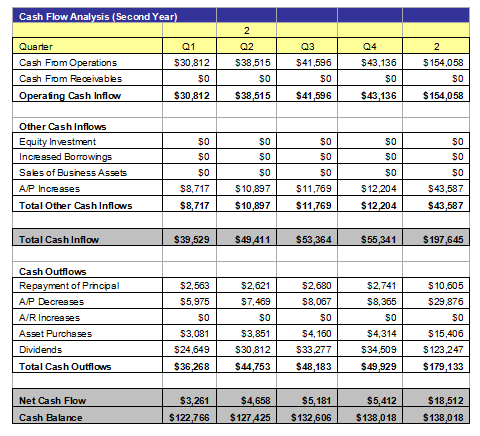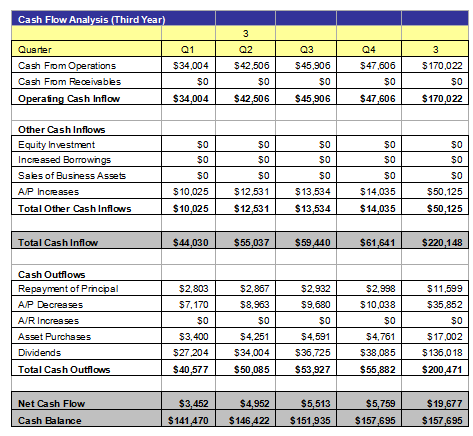Free Financial Planner Business Plan
For Raising Capital from Investors, Banks, or Grant Companies!
Please note that the financials
in this complete free business plan are completely fictitious and may not
match the text of the business plan below. This free business plan demonstration
purposes only. If you are interested in purchasing the completed editable MS Word
and Excel documents for this business plan, please click the button below! Also,
the text of the business plan is formatted with a fully automated
table of contents.
Return to
Samples Page
It should be noted that there is no special software required to use these
templates. All business plans come in Microsoft Word and Microsoft Excel format.
Each business plan features:
- Excecutive Summary
- Company and Financing Summary
- Products and Services Overview
- Strategic Analysis with current research!
- Marketing Plan
- Personnel Plan
- 3 Year Advanced Financial Plan
- Expanded Financial Plan with Monthly Financials
- Loan Amortization and ROI Tools
- FREE PowerPoint Presentation for Banks, Investors,
or Grant Companies!
1.0 Executive Summary
The purpose of this business plan is to raise $100,000 for the development of a financial planning practice while showcasing the expected financials and operations over the next three years. The Financial Planning Practice, Inc. (“the Company”) is a New York based corporation that will provide financial advice, asset management, and sales of insurance/annuities to customers in its targeted market. The Company was founded in 2009 by John Doe.
1.1 Products and Services
The primary revenue stream for the Company will come from the assets that are managed by Mr. Doe as his staff. Each calendar year, the Company will charge a 1% fee equal to the aggregate assets managed in a client’s account. The business will also generate per hour financial/estate planning fees related to advice provided for clients. The Financial Planning Practice will also generate revenues from the sale of insurance products (especially life insurance) as well as annuities. The third section of the business plan will further describe the services offered by the Financial Planning Practice.
1.2 The Financing
Mr. Doe is seeking to raise $100,000 from as a bank loan. The interest rate and loan agreement are to be further discussed during negotiation. This business plan assumes that the business will receive a 10 year loan with a 9% fixed interest rate.
1.3 Mission Statement
The Financial Planning Practice’s mission is to become the recognized local leader in its targeted market for financial advisory and asset management services.
1.4 Mangement Team
The Company was founded by John Doe. Mr. Doe has more than 10 years of experience in the asset management industry. Through his expertise, he will be able to bring the operations of the business to profitability within its first year of operations.
1.5 Sales Forecasts
Mr. Doe expects a strong rate of growth at the start of operations. Below are the expected financials over the next three years.
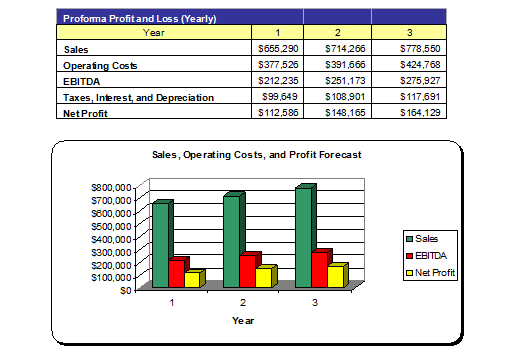
1.6 Expansion Plan
The Founder expects that the business will aggressively expand during the first three years of operation. Mr. Doe intends to implement marketing campaigns that will effectively target individuals within the target market.
2.0 Company and Financing Summary
2.1 Registered Name and Corporate Structure
Financial Planning Practice, Inc. The Company is registered as a corporation in the State of New York.
2.2 Required Funds
At this time, the Financial Planning Practice requires $100,000 of debt funds. Below is a breakdown of how these funds will be used:
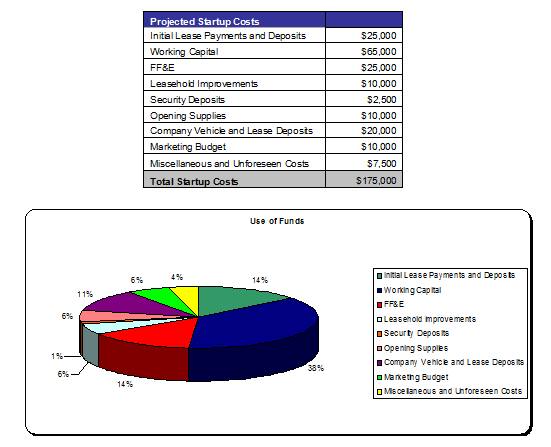
2.3 Investor Equity
Mr. Doe is not seeking an investment from a third party at this time.
2.4 Management Equity
John Doe owns 100% of the Financial Planning Practice, Inc.
2.5 Exit Strategy
If the business is very successful, Mr. Doe may seek to sell the business to a third party for a significant earnings multiple. Most likely, the Company will hire a qualified business broker to sell the business on behalf of the Financial Planning Practice. Based on historical numbers, the business could fetch a sales premium of up to 4 times earnings.
3.0 Products and Services
Below is a description of the financial planning and advisory services offered by the Financial Planning Practice.
3.1 Financial Services
The Company will offer a wide variety of financial products that will help clients plan for their future retirement, college savings, and other financial needs. The sales of these products will generate significant streams of commission based and recurring income. Each year, the business would receive fees of approximately 1% of the dollar amount of assets under management. These fees will comprise of approximately 70% of the revenue generated by the Company during the next five years of operation.
3.2 Sales of Insurance Products and Annuities
Prior to the onset of operations, the business will develop underwriting relationships with life insurance and annuity companies so that the Company can generate commission revenue from the sale of these financial products to the Financial Planning Practice’s clients. Whole life insurance and annuities are a very important part of a client’s financial/estate planning, and the Company will generate a significant income stream from the sale of these products. In this section of the business plan, you should further describe the products and services that you intend to offer to your customers. If you need to add more product categories, please consult the instructions that were included in the zip file.
4.0 Strategic and Market Analysis
4.1 Economic Outlook
This section of the analysis will detail the economic climate, the financial planning industry, the customer profile, and the competition that the business will face as it progresses through its business operations. Currently, the economic market condition in the United States is moderate. The meltdown of the sub prime mortgage market coupled with increasing gas prices has led many people to believe that the US is on the cusp of an economic recession. This slowdown in the economy has also greatly impacted real estate sales, which has halted to historical lows.
4.2 Industry Analysis
The financial services sector has become one of the fastest growing business segments in the U.S. economy. Computerized technologies allow financial firms to operate advisory and brokerage services anywhere in the country. In previous decades, most financial firms needed to be within a close proximity to Wall Street in order to provide their clients the highest level of service. This is no longer the case as a firm can access almost every facet of the financial markets through Internet connections and specialized trading and investment management software. With these advances, several new firms have been created to address the needs of people in rural and suburban areas. The Bureau of Labor Statistics estimates that there are approximately 94,000 investment advisors currently employed throughout the United States. The average annual income for an investment advisor is $62,700. Salaries are expected to increase at a rate of 2.1% a year as inflation increases. In the last study conducted by the U.S. Economic Census, it was found that the revenues of the investment advisory industry increased from $14.8 billion dollars in 1992 to over $52.9 billion dollars by 2005. This represents a five year growth rate of 257%. The number of investment advisory establishments increased 61.5% over the same period. This trend is expected to continue as the ‘baby boomer’ generation begins to move into retirement age.
4.3 Customer Profile
In this section of the business plan, you should describe the type of customer you are seeking to acquire. These traits include income size, type of business/occupation; how far away from your business is to your customer, and what the customer is looking for. In this section, you can also put demographic information about your target market including population size, income demographics, level of education, etc.
4.4 Competitive Analysis
This is one of the sections of the business plan that you must write completely on your own. The key to writing a strong competitive analysis is that you do your research on the local competition. Find out who your competitors are by searching online directories and searching in your local Yellow Pages. If there are a number of competitors in the same industry (meaning that it is not feasible to describe each one) then showcase the number of businesses that compete with you, and why your business will provide customers with service/products that are of better quality or less expensive than your competition.
5.0 Marketing Plan
The Financial Planning Practice intends to maintain an extensive marketing campaign that will ensure maximum visibility for the business in its targeted market. Below is an overview of the marketing strategies and objectives of the Financial Planning Practice.
5.1 Marketing Objectives
-
• Establish relationships with accountants and attorneys within the targeted market.
-
• Implement a local campaign with the Company’s targeted market via the use of flyers, local newspaper advertisements, and word of mouth advertising.
-
• Develop an online presence by developing a website and placing the Company’s name and contact information with online directories.
5.2 Marketing Strategies
Mr. Doe intends on using a number of marketing strategies that will allow Financial Planning Practice to easily target men and women within the target market. These strategies include traditional print advertisements and ads placed on search engines on the Internet. Below is a description of how the business intends to market its services to the general public. The Financial Planning Practice will also use an internet based strategy. This is very important as many people seeking local services, such as financial planners, now the Internet to conduct their preliminary searches. Mr. Doe will register the Financial Planning Practice with online portals so that potential customers can easily reach the business. The Company will also develop its own online website showcasing Mr. Doe’s experience as an asset manager, the Company’s location, and relevant contact information. The Company will maintain a sizable amount of print and traditional advertising methods within local markets to promote the financial planning and advisory services that the Company is selling.
5.3 Pricing
In this section, describe the pricing of your services and products. You should provide as much information as possible about your pricing as possible in this section. However, if you have hundreds of items, condense your product list categorically. This section of the business plan should not span more than 1 page.
6.0 Organizational Plan and Personnel Summary
6.1 Corporate Organization
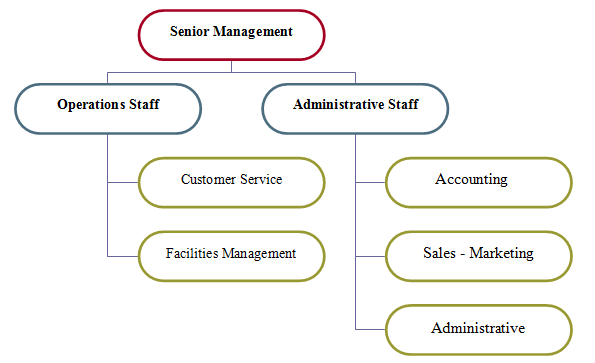
6.2 Organizational Budget
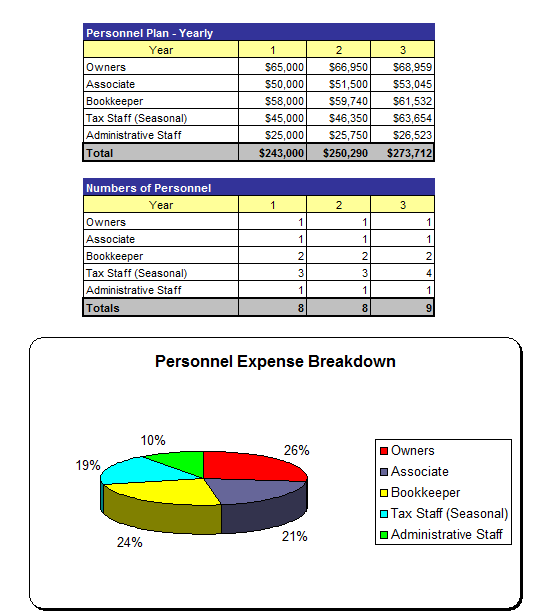
6.3 Management Biographies
In this section of the business plan, you should write a two to four paragraph biography
about your work experience, your education, and your skill set. For each owner or
key employee, you should provide a brief biography in this section.
7.0 Financial Plan
7.1 Underlying Assumptions
-
• The Financial Planning Practice will have an annual revenue growth rate of 16% per year.
-
• The Owner will acquire $100,000 of debt funds to develop the business.
-
• The loan will have a 10 year term with a 9% interest rate.
7.2 Sensitivity Analysis
In the event of an economic downturn, the business may have a decline in its revenues. The Company’s revenues are directly linked to the value of the clients’ accounts, and a decline in the publicly traded asset markets may cause a decline in top line income. However, these fees are generated on a recurring basis, and the business will be able to remain profitable even during an economic recession.
7.3 Source of Funds
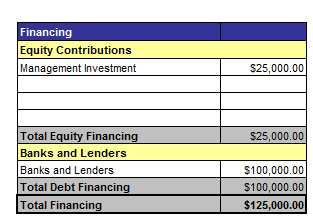
7.4 General Assumptions
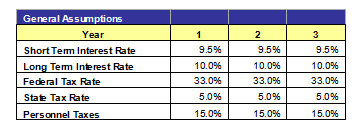
7.5 Profit and Loss Statements
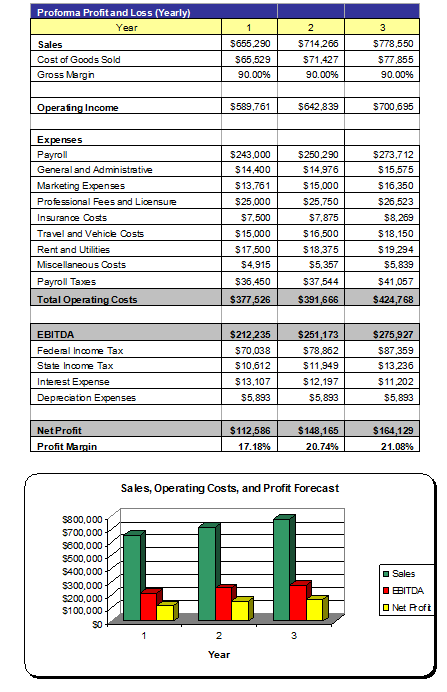
7.6 Cash Flow Analysis
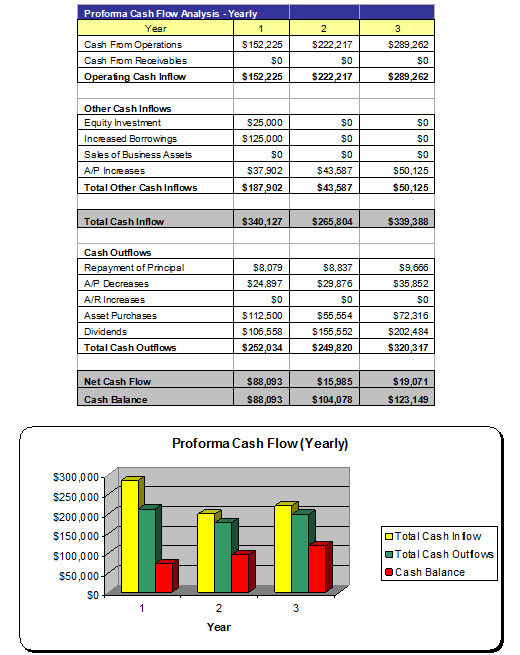
7.7 Balance Sheet
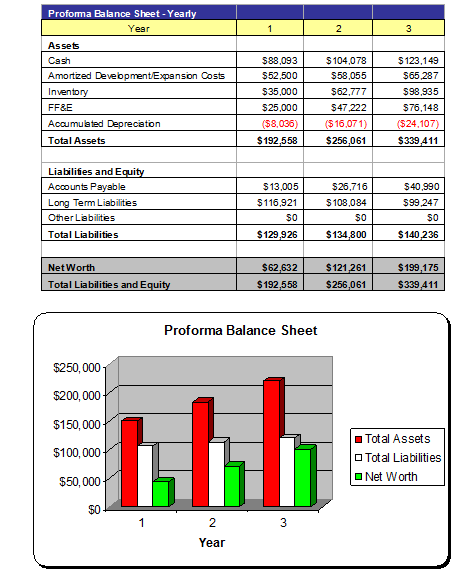 .
.
7.8 General Assumptions
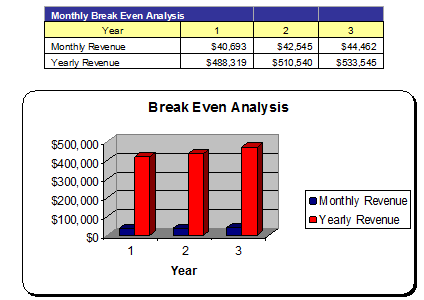
7.9 Business Ratios

Expanded Profit and Loss Statements
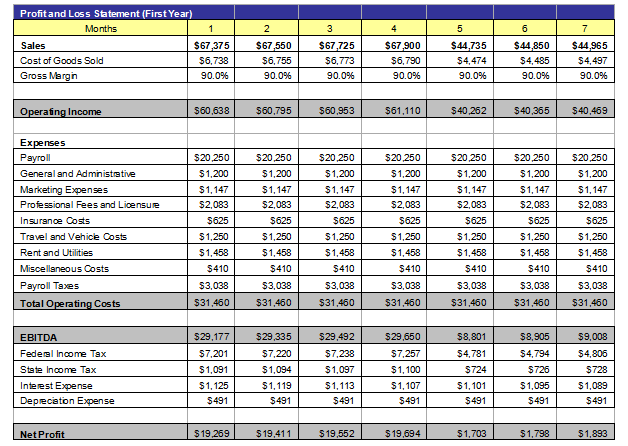
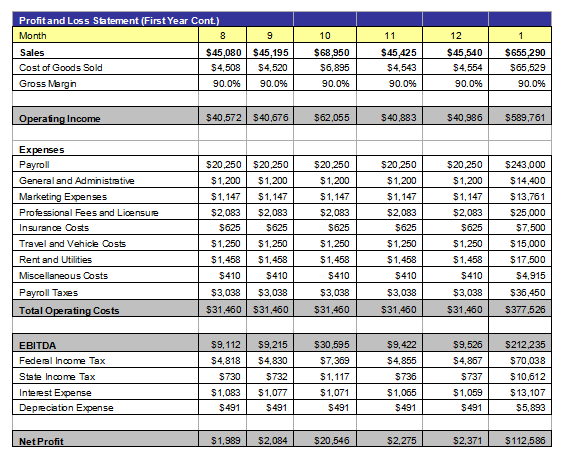
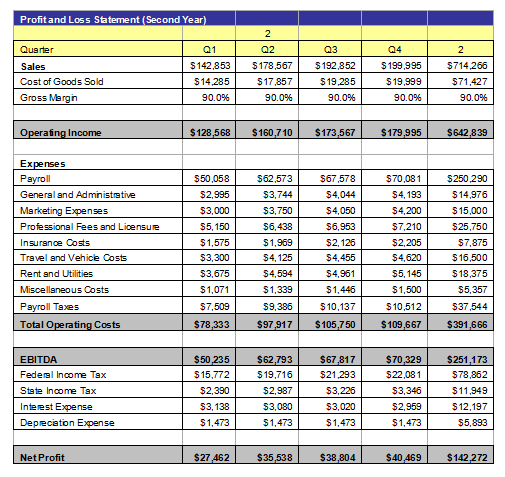
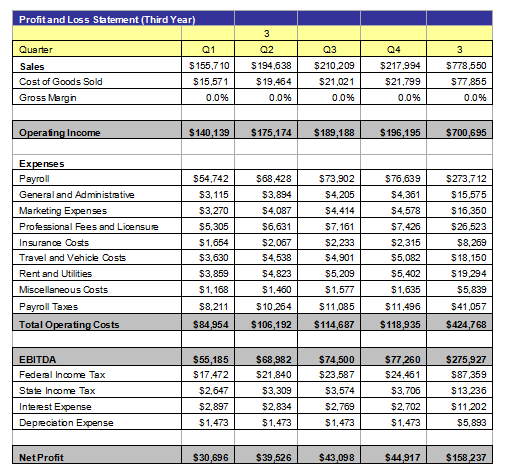
Expanded Cash Flow Analysis
